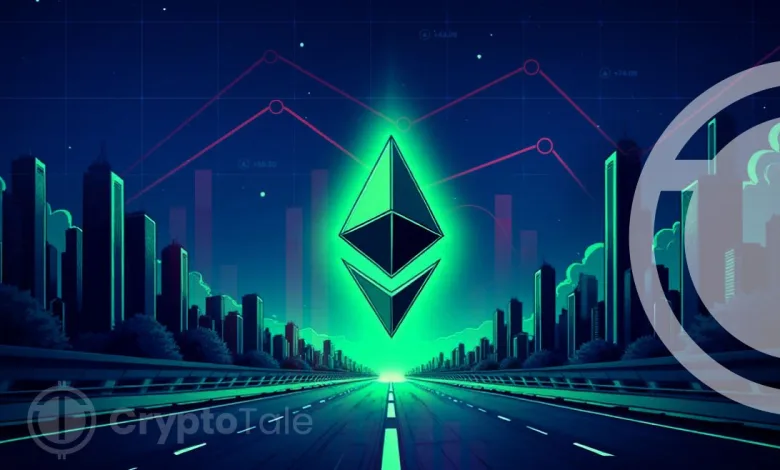Review on Ethereum: Revolutionizing Smart Contracts

Think of a world where contracts execute themselves, applications run with a central authority or intermediaries, and digital assets are traded freely across borders. All of this is possible with Ethereum a revolutionary blockchain network that has redefined decentralized technology. Unlike other blockchains, Ethereum opens up a lot of possibilities with its smart contract capabilities. In this article, you will learn about Ethereum, its history, how it works, and the challenges it faces.
What is Ethereum?
Ethereum is a decentralized blockchain platform that enables developers to build and run decentralized applications (dApps) using smart contracts. Unlike Bitcoin, which was created mainly as digital money, Ethereum was designed to be a more versatile platform, supporting a wide variety of applications.
Ethereum’s smart contracts allow developers to create applications that automatically execute transactions or actions when specific conditions are met. This has led to the development of thousands of applications across various industries, including finance (DeFi), gaming, and even digital collectibles (NFTs).
The native cryptocurrency of the Ethereum platform is called Ether (ETH). It has multiple purposes, including paying transaction fees, rewarding miners, and purchasing digital assets like NFTs and in-game items. Ethereum also has its own programming language called Solidity, which developers use to write smart contracts. The platform is currently the second-largest cryptocurrency by market capitalization.
History of Ethereum
Launch of White Paper
Vitalik Buterin, a Canadian computer programmer, published the Ethereum whitepaper in 2013. The Ethereum whitepaper was the combined work of many computer scientists, like Dr. Gavin Wood who helped in creating the Solidity coding language, Charles Hoskinson a lead figure in Ethereum’s early development, and others.
The whitepaper outlined many of the innovations that would set Ethereum apart from other competitors like smart contracts, and decentralized applications. In 2014, the Ethereum team participated in the North American Bitcoin Conference where Vitalik explained in detail about his vision for Ethereum. Later that year, the team conducted an ICO for the Ethereum project raising $18 million in BTC.
Launch of Ethereum
In July 2015, the Ethereum Blockchain went live under the name Frontier and the first iteration used the Proof of Work consensus mechanism. Unlike Bitcoin, Ethereum was launched with unlimited supply and had a block reward of 5 ETH. Following the launch, the development team announced Ice Age, a feature that increased the mining difficulty every 100,000 blocks.
At block 1150000, the development team launched an upgrade to Ethereum called the “Homestead.” The upgrades included a GUI and an enhancement to the platform with the help of Ethereum Improvement Proposals (EIP).
DAO Hack
In 2016, Ethereum faced its first major crisis, where hackers stole $50 million worth of ETH from the DAO smart contract protocol which had raised $150 million at that time. As a direct consequence of this incident, the Ethereum community split into two groups. The first group consisted of developers who wanted to create a new Ethereum chain using a fork, while the second group argued to leave the Ethereum chain the same. Currently, the Ethereum that was forked from the main blockchain is the current Ethereum, while the main blockchain that was hacked is called Ethereum Classic.
Major Upgrades To Ethereum Blockchain
After the DAO hack, Ethereum introduced various proposals and upgrades to the blockchain. In 2017, Byzantium Fork as part of the Metropolis phase introduced various EIPs that enhance the security of the network. The upgrades resulted in reduced block reward from 5 ETH to 3 ETH, improvements to Ethereum Virtual Machine (EVM), and zk-SNARKs for privacy.
In February 2019, the Constantinople upgrade resulted in the optimization of gas fees and improved security. It also included a reduction in block reward from 3 ETH to 2 ETH and introduced EIPs for more efficient contract execution. Furthermore, in December of the same year, the Istanbul upgrade brought in network optimization, from improving interoperability with other blockchain platforms to lowering gas fees for operations.
Introduction to Ethereum 2.0
The launch of the Beacon chain in 2020 marked the first phase of Ethereum 2.0. It introduced the Proof of Stake consensus mechanism running in parallel with the Proof of Work mechanism in the Ethereum blockchain. The transition from PoW to PoS is called the Merge.
In September 2022, the Beacon chain which operated on a PoS mechanism had successfully unified with the main Ethereum blockchain, thus replacing the PoW mechanism with PoS. This transition introduced Ethereum staking, where users can lock up their Ether to help secure the network and earn rewards. Although the Merge didn’t make Ethereum faster or cheaper, instead it laid the framework for future upgrades. The important beneficiary of this transition is a reduction in energy consumption, changing Ethereum into an eco-friendly blockchain.
How Does Ethereum Work?
Ethereum is based on blockchain technology, which is a distributed ledger where every transaction is recorded. Smart contracts are self-executing contracts that automatically trigger actions when predefined conditions written in code are met. When someone interacts with a smart contract, a transaction is created and broadcast to the Ethereum network. This transaction is then validated by the network, and if it is valid, the smart contract’s code will execute the corresponding action.
The Ethereum Virtual Machine (EVM) is a decentralized computing environment where these smart contracts are executed. The EVM ensures that the same rules and outcomes are applied consistently across all nodes on the network. This guarantees that smart contracts run exactly as programmed, without any downtime or third-party interference. To execute smart contracts on Ethereum, users must pay gas fees. These fees are used to compensate for the computational resources used.
Advantages of Ethereum
- Ethereum allows developers to build and deploy their applications using smart contracts. This flexibility allows a wide range of decentralized applications across various industries to be based on the blockchain.
- It has a large community of developers who are constantly looking for new ways to improve the network and develop new kinds of applications.
- Ethereum token standards ERC-20 and ERC-721 are adopted by various dApps, allowing seamless interoperability with various exchanges and platforms.
Disadvantages of Ethereum
- As Ethereum has no upper limit to the number of tokens that can be mined, there is a possibility of inflation. This means the price of Ethereum won’t appreciate like Bitcoins over time; instead, there is a possibility of price declines.
- Although smart contracts are powerful they are also prone to vulnerabilities. If the code is poorly written, it can be exploited and can lead to loss of funds.
- Developing smart contracts on Ethereum requires knowledge of Solidity and an understanding of blockchain technology, which can be complex for new developers.
Conclusion
Ethereum has established itself as a pioneering force in the blockchain space, offering a versatile platform for decentralized applications and smart contracts. Its evolution from a simple white paper to a robust network powering industries like finance, and gaming showcases its transformative potential. Despite challenges such as scalability issues, security vulnerabilities, and the complexity of development, Ethereum’s continuous innovation and active developer community keep it at the forefront of the crypto world. The transition to Proof of Stake with Ethereum 2.0 marks a significant step towards greater sustainability and scalability, laying the groundwork for future advancements. As Ethereum continues to mature, its impact on the decentralized technology landscape is likely to grow, driving further adoption and integration into everyday digital experiences.




